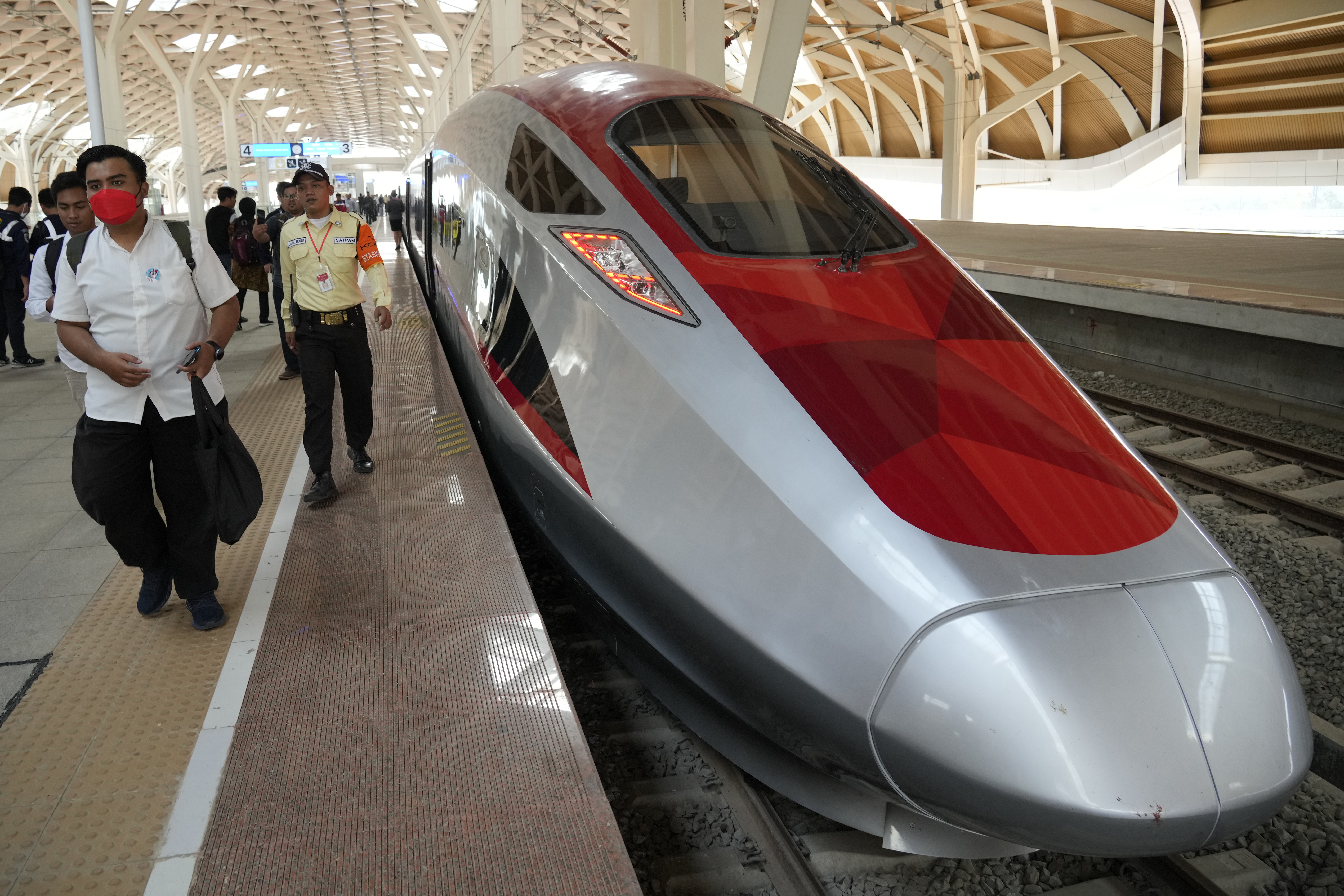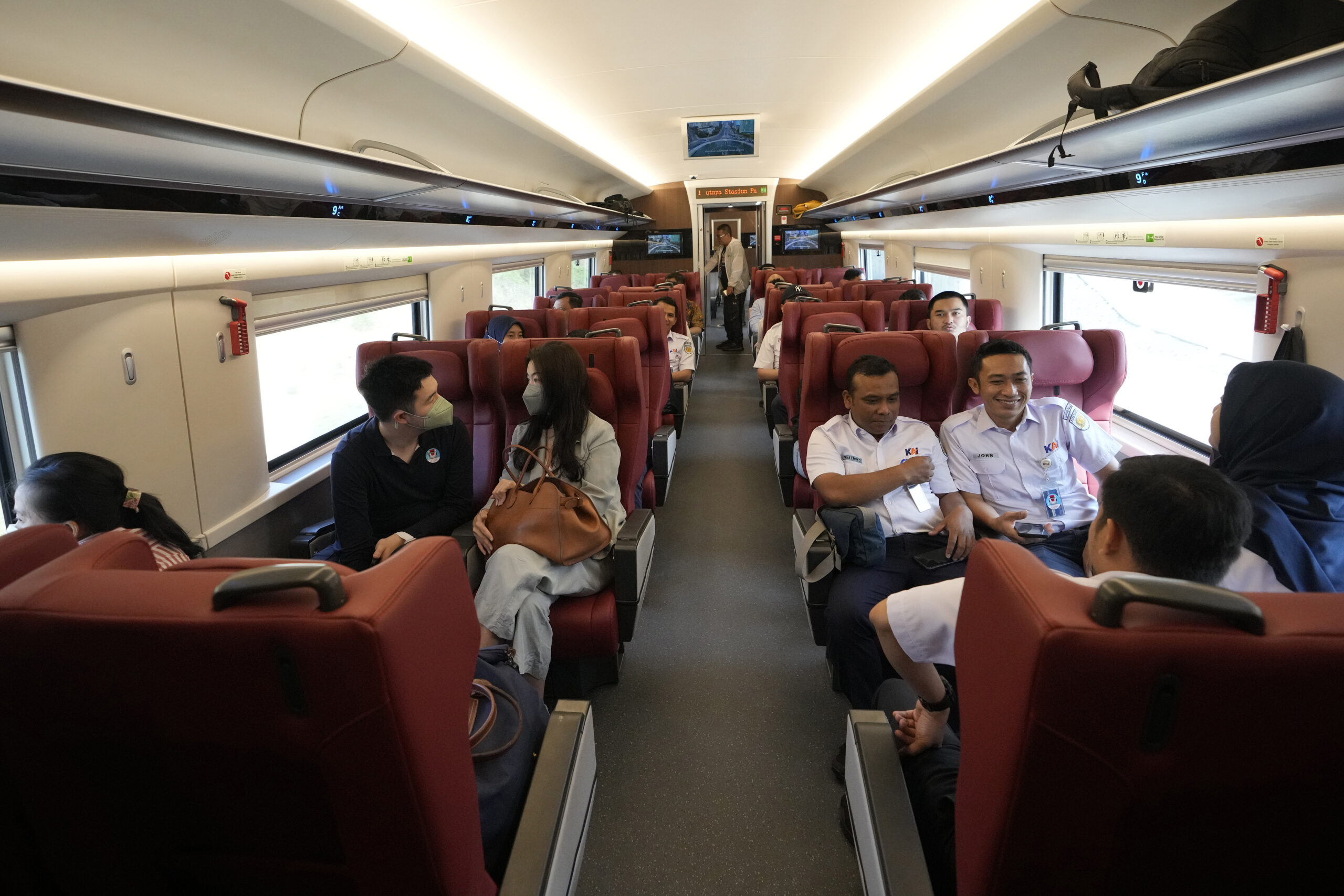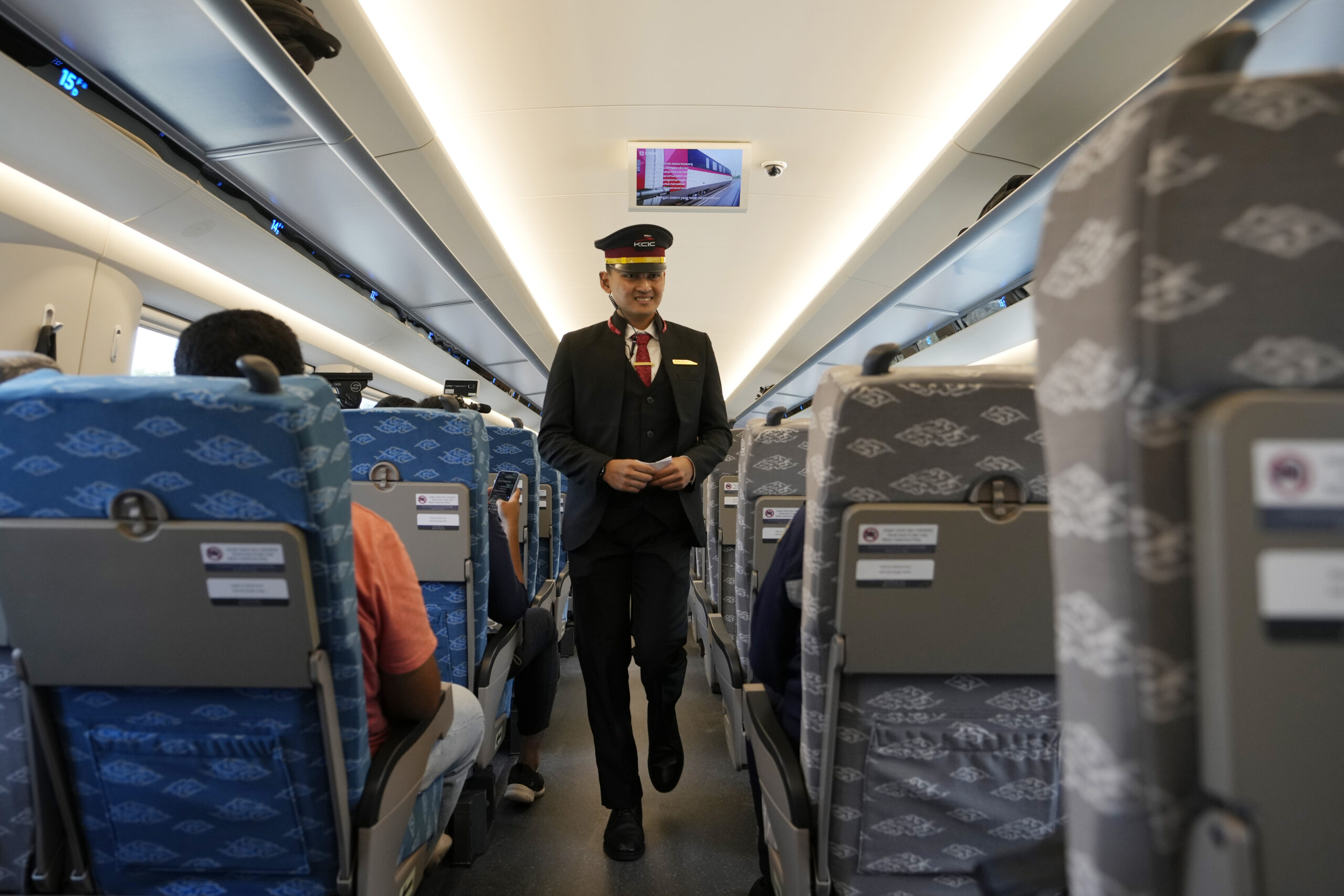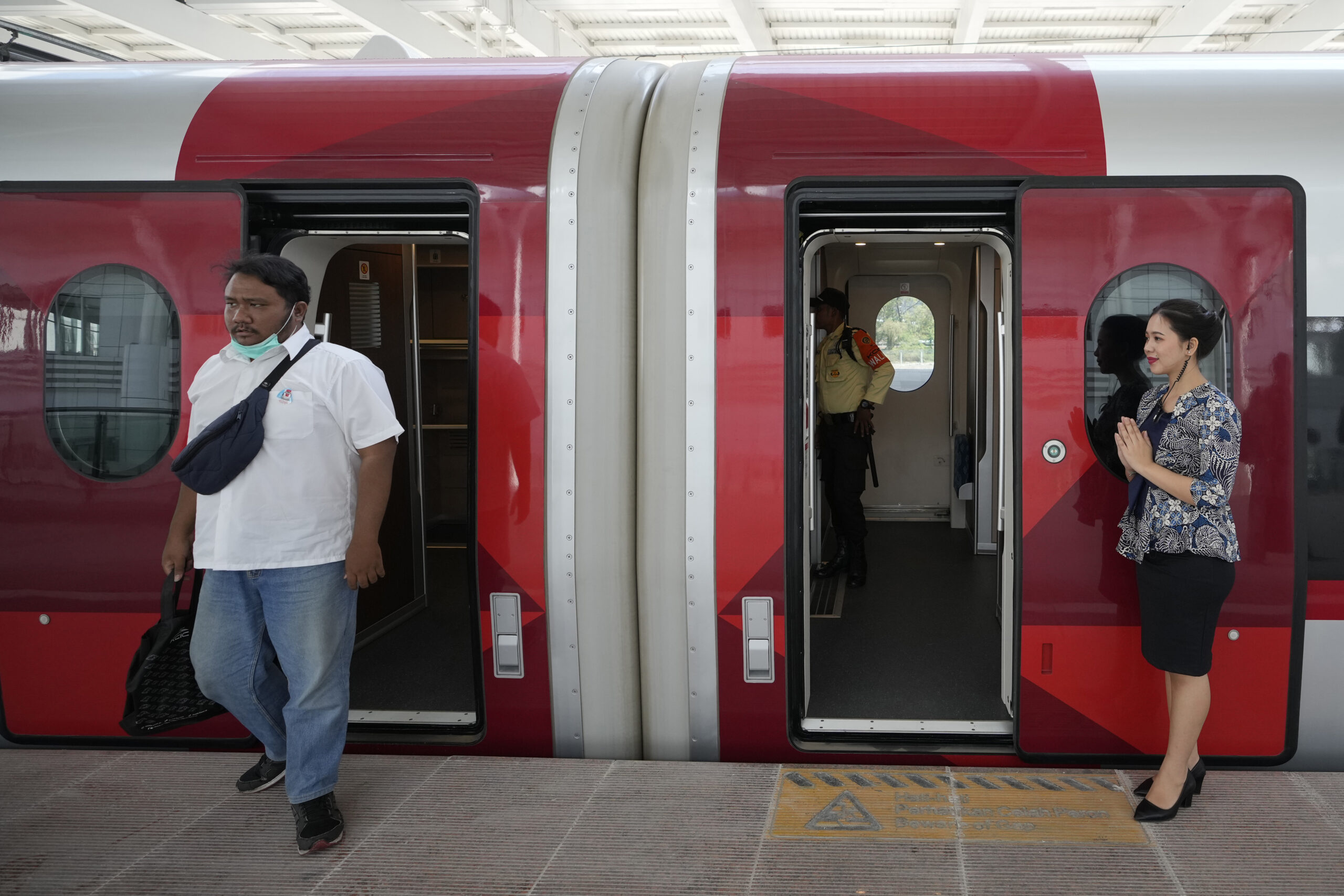JAKARTA, Indonesia (AP) – Indonesia is launching Southeast Asia’s first high-speed railway, largely funded by China.
It is a key project under China’s Belt and Road infrastructure initiative that will cut travel time between the capital and another major city from the current three hours to about 40 minutes.
The project has been beset with delays and increasing costs, and some observers doubt its commercial benefit, but President Joko Widodo has championed it and will be inaugurating the 142.3-kilometre railway as it begins commercial operations Monday.
The Chinese-made bullet train, called “Whoosh,” will connect Jakarta with Bandung, the heavily populated capital of West Java province. Widodo, along with other high-ranking officials, is expected to ride the Whoosh from its first station, Halim KCBJ in eastern Jakarta to Bandung’s Tegalluar station, the last of the line’s four stations.
The USD7.3 billion project, largely funded by China, was constructed by PT Kereta Cepat Indonesia-China, known as PT KCIC, a joint venture between an Indonesian consortium of four state-owned companies and China Railway International Co Ltd. The joint venture said the trains will be the fastest in Southeast Asia, with speeds of up to 350 kph.

Luhut Binsar Pandjaitan, the coordinating minister for maritime and investment, said China Railway has agreed to transfer its technology to Indonesia so that in the future the country’s high-speed trains can be made domestically.
Chinese Premier Li Qiang took a test ride early last month while visiting Jakarta for three days of talks with leaders of the Association of Southeast Asia Nations and other countries.
Li rode the train from Halim KCBJ station to the next station ,in West Java’s Karawang city, a 40-kilometre ride that took about 11 minutes. He then returned on the same train.
Widodo took a 25-minute test ride on the train a week later and told reporters that he felt comfortable sitting or walking inside the bullet train even at its top speeds. He urged people to switch from cars to mass transportation to reduce congestion and pollution, adding that congestion in Jakarta and Bandung is estimated to cost the economy more than USD6.5 billion a year.
PT KCIC has also been running a two-week, free-of-charge public trial prior to the inauguration.

Indonesia broke ground on the project in 2016. The line was originally expected to begin operations in 2019, but was delayed by disputes over land acquisition, environmental issues and the COVID-19 pandemic. It was planned to cost IDR66.7 trillion, but the amount ballooned to IDR113 trillion.
The trains have been modified for Indonesia’s tropical climate and are equipped with a safety system that can respond to earthquakes, floods and other emergency conditions. The 209-metre train has a capacity of 601 passengers.
Ticket prices had not been finalised as of Saturday, but PT KCIC estimated one-way prices per passenger would range from IDR250,000 for second class to IDR350,000 for VIP seats.
Passengers going to downtown Bandung need to take a feeder train from the Padalarang station that will add a further 20 minutes, with an estimated cost about IDR50,000.
The rail deal was signed in October 2015 after Indonesia selected China over Japan in fierce bidding. It was financed with a loan from the China Development Bank for 75 per cent of the cost. The remaining 25 per cent came from the consortium’s own funds.

The project is part of a planned 750-kilometre high-speed train line that would cut across four provinces on Indonesia’s main island of Java and end in the country’s second-largest city, Surabaya.
“I’m so happy and very excited that finally we can ride a bullet train in Indonesia,” said Christianto Nusatya, a Jakarta resident who joined a public test ride last week. “But still, I would prefer to choose a regular train or car, because Jakarta-Bandung is too short and not worth it to be reached by high-speed train.”
Deddy Herlambang, executive director of the Jakarta-based NGO Institute for Transportation Studies, said the public does not really need a high-speed train on the Jakarta-Bandung route because there were already many other ways of traveling between the two cities.
He said the bullet train would have a significant economic impact if it connected Jakarta and Surabaya. However, he was pessimistic that the railway project would make a profit in less than 30 years of operation.
“The high-speed train cannot replace the old transportation that previously existed,” Herlambang said, “People, of course, will prefer to use far cheaper modes of transportation for short distance trips.”



